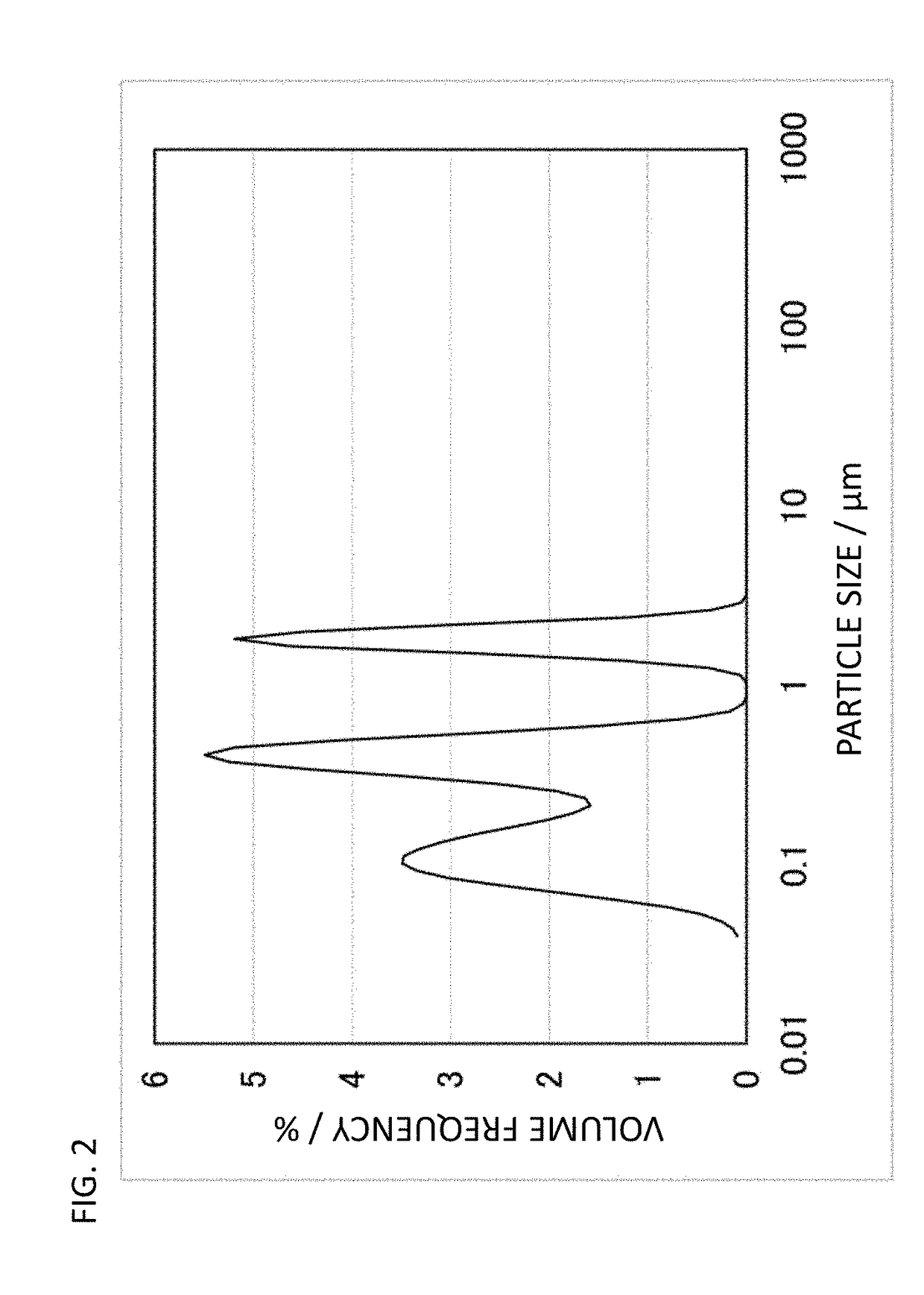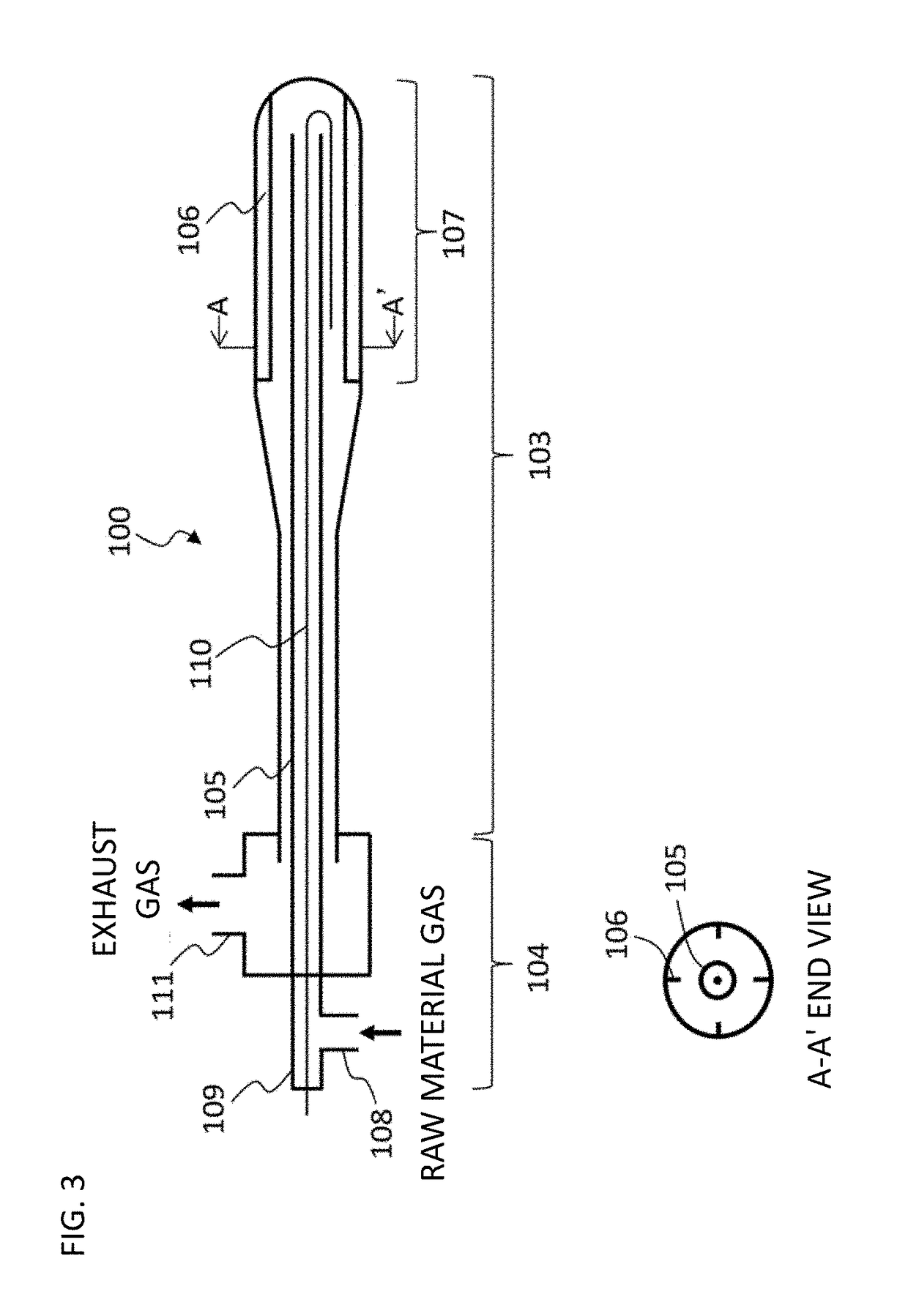Conductive polymer material and molded article using same
a technology of conductive polymer and molded material, which is applied in the direction of non-conductive materials with dispersed conductive materials, conductors, textiles and paper, etc., can solve the problems of poor dispersibility of fine carbon fiber such as conventional cnf, and achieve excellent dispersibility, crystallinity, and conductivity. excellent
- Summary
- Abstract
- Description
- Claims
- Application Information
AI Technical Summary
Benefits of technology
Problems solved by technology
Method used
Image
Examples
preparation example 1
Catalyst Preparation Example 1
[0124]Cobalt nitrate hexahydrate (3N5 produced by Kanto Chemical Co., Inc.) was weighed to 6.17 g and dissolved in 30 g of a mixed solvent of distilled water and ethanol at a mass ratio of 2:1. To the aqueous cobalt nitrate solution, 2.5 g of magnesium oxide (DENMAG® KMAOH-F produced by Tateho Chemical Industries Co., Ltd.) with a specific surface area of 0.61 m2 / g was added and stirred for 1 hour in a state of being maintained at 50° C. in a water bath. After stirring, water was evaporated by an evaporator. The solid component thus produced was vacuum dried at 60° C. for 24 hours and then sintered at 400° C. for 5 hours. After sintering, the solid component thus produced was ground in an agate mortar to produce a cobalt-magnesium oxide supported catalyst on which 50 mass % of cobalt metal was supported.
preparation example 2
Catalyst Preparation Example 2
[0125]Cobalt nitrate hexahydrate (3N5 produced by Kanto Chemical Co., Inc.) was weighed to 0.62 g and dissolved in 30 g of a mixed solvent of distilled water and ethanol at a mass ratio of 2:1. To the aqueous cobalt nitrate solution, 2.5 g of magnesium oxide (DENMAG® KMAO-H produced by Tateho Chemical Industries Co., Ltd.) with a specific surface area of 0.61 m2 / g was added and stirred for 1 hour in a state of being maintained at 50° C. in a water bath. After stirring, water was evaporated by an evaporator. The solid component thus produced was vacuum dried at 60° C. for 24 hours and then sintered at 400° C. for 5 hours. After sintering, the solid component thus produced was ground in an agate mortar to produce a cobalt-magnesium oxide supported catalyst on which 5 mass % of cobalt metal was supported.
preparation example 3
Catalyst Preparation Example 3
[0126]Cobalt nitrate hexahydrate (3N5 produced by Kanto Chemical Co., Inc.) was weighed to 2.47 g and dissolved in 30 g of a mixed solvent of distilled water and ethanol at a mass ratio of 2:1. To the aqueous cobalt nitrate solution, 2.5 g of magnesium oxide (DENMAG® KMAOH-F produced by Tateho Chemical Industries Co., Ltd.) with a specific surface area of 0.61 m2 / g was added and stirred for 1 hour in a state of being maintained at 50° C. in a water bath. After stirring, water was evaporated by an evaporator. The solid component thus produced was vacuum dried at 60° C. for 24 hours and then sintered at 400° C. for 5 hours. After sintering, the solid component thus produced was ground in an agate mortar to produce a cobalt-magnesium oxide supported catalyst on which 20 mass % of cobalt metal was supported.
PUM
| Property | Measurement | Unit |
|---|---|---|
| median diameter D50 | aaaaa | aaaaa |
| resistivity | aaaaa | aaaaa |
| median diameter D50 | aaaaa | aaaaa |
Abstract
Description
Claims
Application Information
 Login to View More
Login to View More - R&D
- Intellectual Property
- Life Sciences
- Materials
- Tech Scout
- Unparalleled Data Quality
- Higher Quality Content
- 60% Fewer Hallucinations
Browse by: Latest US Patents, China's latest patents, Technical Efficacy Thesaurus, Application Domain, Technology Topic, Popular Technical Reports.
© 2025 PatSnap. All rights reserved.Legal|Privacy policy|Modern Slavery Act Transparency Statement|Sitemap|About US| Contact US: help@patsnap.com



